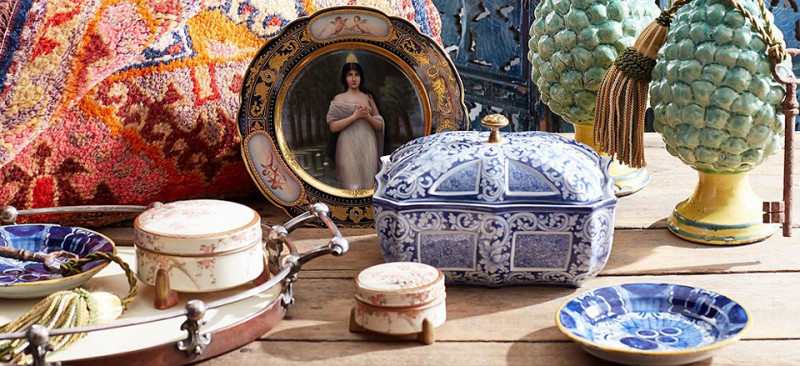A Beginner’s Guide on how to Spot Authentic Antiques
Shopping antiques may be like a fascinating treasure hunt. Finding a real piece can give your collection history and character whether your hunt is for classic jewelry, decorative art, or vintage furniture. But among many replicas, how can beginners find real antiques? We will go over the key ideas in this book to enable you to make wise purchases and boldly spot real antiques.
1. Know what “antique” means.
Clarifying what qualifies as an antique is crucial before we start. An antique is typically something at least 100 years old. Usually considered vintage is anything younger but still old—between 20 and 99 years. Knowing this will help you classify the items you come across.
2. Look at the workmanship and materials.
Real antiques were created before mass production methods of today. so:
Materials: Older pieces often incorporate hand-blown glass, metal, solid wood, or real leather. Look for indicators of aging include normal wear, fading, or patina—a green or brown surface layer on metals.
Handmade antiques may show minor flaws, such uneven hand-painted motifs on pottery or chisel marks on furniture. These special features suggest the work was not machine-made.
For instance, although modern furniture usually employs glue or staples, a real antique chair can have irregularly carved dovetail connections (interlocking wood joints).
3. Search for Indices of Aging.
Real antiques exhibit their age in a natural way. Seek for:
Wood: Look for little cracks brought on by changing temperature over time. Also look for unequal fading.
Metal: Real brass or bronze objects could show obvious aging with a patina.
Old glass sometimes has little ripples or bubbles from early production methods.
Pro Tip: Watch artificial aging methods closely. Some vendors “distress” products to give them an aged look. Usually uneven, genuine wear matches the use of the item.
4. Check for Maker’s Marks or Signatures.
Many real antiques include maker’s marks, hallmarks, or artist signatures that enable one to track their source. Often found in obscure locations like the underneath of furniture, within clocks, or on the base of porcelain objects are these.
Look for branded marks, stamped initials, or labels on the rear or inside drawers on furniture.
Look for hallmarks denoting purity, maker, and date on silver and jewelry. For instance, sterling silver commonly has “925.”
Pottery and artwork: Signatures or studio marks on the bottom will attest to authenticity.
Investigating these signs online or under professional advice will help you understand the age and source of an item.
5. Recognize the fashion and trend of the era.
Every historical period had unique architectural style. Knowing them will enable you to identify works from particular eras.
Known for dark woods, flowery motifs, and elaborate carvings, Victorian Era (1837–1901)
Geometric forms, crisp lines, and chrome or glass finishes define Art Deco (1920s–1930s).
Mid-Century Modern (1940s–1960s) furniture is sleek, simple with natural wood tones.
For instance, an item professing to be “victorian” but using modern-style screws could be a reproduction.
6. Try the Build and Weight.
The quality of the materials used in authentic antiques sometimes makes them clearly weighted. Like this:
Furnishings: Modern mass-produced pieces are lighter than solid wood antiques.
Metal Objects: Vintage brass or iron is much heavier than contemporary copies.
Something that feels especially light could be a sign of reproduction.
7. Take Advantage of Technology
Modern instruments can simplify antique hunting:
Helps identify minute hallmarks, flaws, or tool marks using magnifying glass.
Some contemporary paints and glues glow under UV light, which lets you spot likely fakes.
Online databases such as WorthPoint or LiveAuctioneers let you investigate related products and contrast specifics.
8. Consult a Professional Advisor
See a qualified appraiser or antique dealer if you’re not sure about a piece. She can:
Share professional views about authenticity.
Calculate the item’s market worth.
Talk about historical background about its beginnings.
Developing links with reputable antique stores or collector groups will increase your confidence and expertise.
9. Rely on your instincts.
Finally, follow your gut feeling. A bargain that seems too good to be true most likely is so. Approach deals carefully since reproductions are sometimes far less expensive than actual antiques.
Finally, start your antique adventure with assurance.
Spotting real antiques calls for time, patience, and repetition. By concentrating on materials, workmanship, and signs of aging—and then combining it with research—you will become quite sensitive for real gems. Whether you’re starting a collection or adding a classic to your house, finding the real deal can make you very happy.
We at AntiquesVibe take great satisfaction in providing well chosen, real antiques and vintage items. Start your treasure hunt right now and find ageless beauty with a narrative.








Add comment
You must be logged in to post a comment.